I have to take a .raw12 file, separate the 4 channels (R, G, G, B) and save them as valid images (8-bits in memory) without using any external library (.ppm) in C++.
You can read about raw12 here and ppm file format here.
I have written the code but it is giving me this output.
I have tried a lot of things but it is always giving me output similar to the one above. I think there is a problem in datatype conversion but I am not sure.
I am trying to debug it from 2 days, still no luck.
Here is this code.
#include <fstream>
#include <iostream>
using namespace std;
const int BUFFERSIZE = 4096;
int main ()
{
ifstream infile;
infile.open("portrait.raw12", ios::binary | ios::in);
ofstream outfile;
outfile.open("Redtwo.ppm", ios::binary);
//outfile.write("P6 ", 3);
//outfile.write("1536 2048 ", 8);
//outfile.write("2048 ", 4);
//outfile.write("255 ", 4);
//outfile << "P6\n" << 1536 << "\n" << 2048 << "\n255\n";
outfile << "P6" << "\n"
<< 1536 << " "
<< 2048 << "\n"
<< 255 << "\n"
;
uint8_t * bufferRow = new uint8_t[BUFFERSIZE];
if(!infile)
{
cout<<"Failed to open"<<endl;
}
int size=1536*2048*3;
char * RedChannel=new char[size];
int GreenChannel_1,GreenChannel_2,BlueChannel;
int rowNum=0;
int i=0;
int j=0;
int pixel=1;
while(rowNum<3072)
{
infile.read(reinterpret_cast<char*>(bufferRow), BUFFERSIZE);
if(rowNum%2==0)
{
while(i<BUFFERSIZE)
{
RedChannel[j]=(uint8_t)bufferRow[i];
GreenChannel_1=((uint8_t)(bufferRow[i+1] & 0x0F) << 4) | ((uint8_t)(bufferRow[i+2] >> 4) & 0x0F);
i+=3;
//Collect s;
//s.r=(char)RedChannel[j];
//s.g=(char)0;
//s.b=(char)0;
//unsigned char c = (unsigned char)(255.0f * (float)RedChannel[j] + 0.5f);
//outfile.write((char*) &c, 3);
//outfile.write((char*) 255, sizeof(c));
//outfile.write(reinterpret_cast<char*>(&RedChannel), 4);
if(pixel<=3 && rowNum<5)
{
cout<<"RedChannel: "<<RedChannel[j]<<endl;
if(pixel!=3)
cout<<"GreenChannel 1: "<<GreenChannel_1<<endl;
}
pixel++;
j++;
}
RedChannel[j]='\n';
j++;
}
else
{
while(i<BUFFERSIZE)
{
GreenChannel_2=(uint8_t)bufferRow[i];
BlueChannel=((uint8_t)(bufferRow[i+1] & 0x0F) << 4) | ((uint8_t)(bufferRow[i+2] >> 4) & 0x0F);
i+=3;
if(pixel<=3 && rowNum<5)
{
cout<<"GreenChannel 2: "<<GreenChannel_2<<endl;
if(pixel!=3)
cout<<"BlueChannel: "<<BlueChannel<<endl;
}
pixel++;
}
}
rowNum++;
i=0;
pixel=1;
if(rowNum<5)
cout<<" "<<endl;
}
infile.close();
outfile.write(RedChannel, size);
outfile.close();
}
